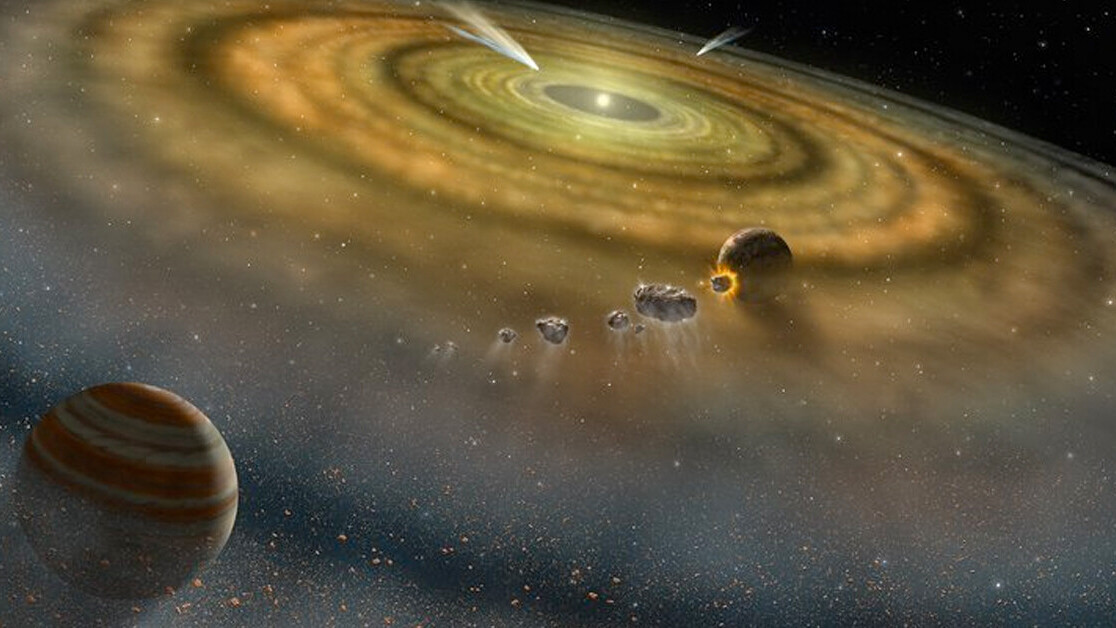Far from our solar system, phosphorus surrounding distant stars could be a telltale sign of worlds friendly to extraterrestrial life.
Is phosphorus around exoplanets a sign of life-friendly worlds? By examining the chemical composition of stars known to host exoplanets, it may be possible to determine which solar systems are likely to house alien lifeforms.
Life on Earth depends on the presence of six key ingredients — carbon, hydrogen, nitrogen, oxygen, phosphorus, and sulfur (known as CHNOPS). Of these, phosphorus is the rarest on Earth, making it the limiting ingredient for the chemical reactions of life.
This week, we are joined by Dr. Natalie Hinkel, a planetary astrophysicist at the Southwest Research Institute. We talk about her work showing how we might look for phosphorus around other stars in the search for extraterrestrial life.
A new study from the Southwest Research Institute (SwRI) looks at stars known to host exoplanets, noting those with high concentrations of phosphorus. The research suggests that looking for stars rich in this element could help us determine which star systems are likely to be home to life.
“When searching for exoplanets and trying to see whether they are habitable, it’s important that a planet be alive with active cycles, volcanoes, and plate tectonics. My co-author, Dr. Hilairy Hartnett, is an oceanographer and pointed out that phosphorus is vital for all life on Earth. It is essential for the creation of DNA, cell membranes, bones and teeth in people and animals, and even the sea’s microbiome of plankton,” said SwRI’s Dr. Natalie Hinkel, a planetary astrophysicist at SwRI.
Break dancing is back!
By breaking light from distant stars apart, and examining the spectrum of light produced reveals the composition of stars. As light passes through the visible surface (or photosphere) of stars, some of the energy is absorbed, creating dark gaps in the frequencies of light seen by astronomers.
Currently, it is not possible to measure the chemical composition of the bodies of planets in distant solar systems. Therefore, astronomers assume that exoplanets are composed of materials similar to their parent stars.
“Of course, there are some exceptions to this relationship… For example, the Sun, Earth, and Mars all agree to within 10% in the relative proportions of the major rocky planet-building elements. However, the chemical connection between star and planet offers a starting point for modeling the interior composition and mineralogy of an exoplanet,” researchers wrote in an article describing the study, published in the Astrophysical Research Letters.
However, we can now begin to glimpse the chemical makeup of the atmospheres of exoplanets that pass in front of their stars as seen from Earth. As light from a star passes through the atmosphere of a distant planet during these transits, some wavelengths of light are absorbed by gases, revealing the chemical makeup of that world’s atmosphere.
“Direct compositional measurements of the planet are limited to atmospheric spectroscopy which can only occur during transit. Yet, knowing the composition of the planet’s atmosphere is only one factor in determining whether a planet is habitable from a chemical perspective,” researchers describe.
A modern database for an ancient librarian
“Our deeds attach themselves to us like the flame to phosphorus. They constitute our brilliance, to be sure, but only in so far as they consume us.”
— Andre Gide
The Hypatia Catalog, developed by Hinkel, provides a public database of chemical compositions of stars collected by astronomers around the globe. The team compared the figures to chemical ratios found in the crust of the Earth, terrestrial silica deposits, and marine plankton.
“But there’s so little phosphorus stellar abundance data. Phosphorus data exists for only about 1% of stars. That makes it really difficult to figure out any clear trends in between the stars, let alone the role of phosphorus in the evolution of an exoplanet,” Hinkel said.
Each element gives away its presence by forming lines in the spectra of stars. When produced by the formation of light, these bright markings are called emission lines. Light passing through the atmospheres of planets or stars form dark markers called absorption lines.
The region at which these absorption lines of phosphorus are found sit at the region at the red edge of the rainbow, just before the electromagnetic spectrum turns to infrared. This part of the rainbow is little-studied by astronomers, and few instruments are available to examine these frequencies.
“We find that, in general, plankton, Earth, and Mars are N-poor and P-rich compared with nearby stars. However, the dearth of P abundance data, which exists for only ~1% of all-stars and 1% of exoplanet hosts, makes it difficult to deduce clear trends in the stellar data, let alone the role of P in the evolution of an exoplanet,” researchers describe.
Our own Sun is home to a fairly high concentration of phosphorus, and biology on Earth uses some of this to drive the mechanisms of life.
Small rocky planets would draw phosphorus into their cores, leaving the surface devoid of this element vital to biological systems. Hinkel believes systems, where phosphorus is more common and available for biological processes, may be among the best places to search for alien life.
So you like TNW? Then join our upcoming online event, TNW2020, you don’t want to miss it.
This article was originally published on The Cosmic Companion by James Maynard, founder and publisher of The Cosmic Companion. He is a New England native turned desert rat in Tucson, where he lives with his lovely wife, Nicole, and Max the Cat. You can read this original piece here.
Astronomy News with The Cosmic Companion is also available as a weekly podcast, carried on all major podcast providers. Tune in every Tuesday for updates on the latest astronomy news, and interviews with astronomers and other researchers working to uncover the nature of the Universe.
Get the TNW newsletter
Get the most important tech news in your inbox each week.







